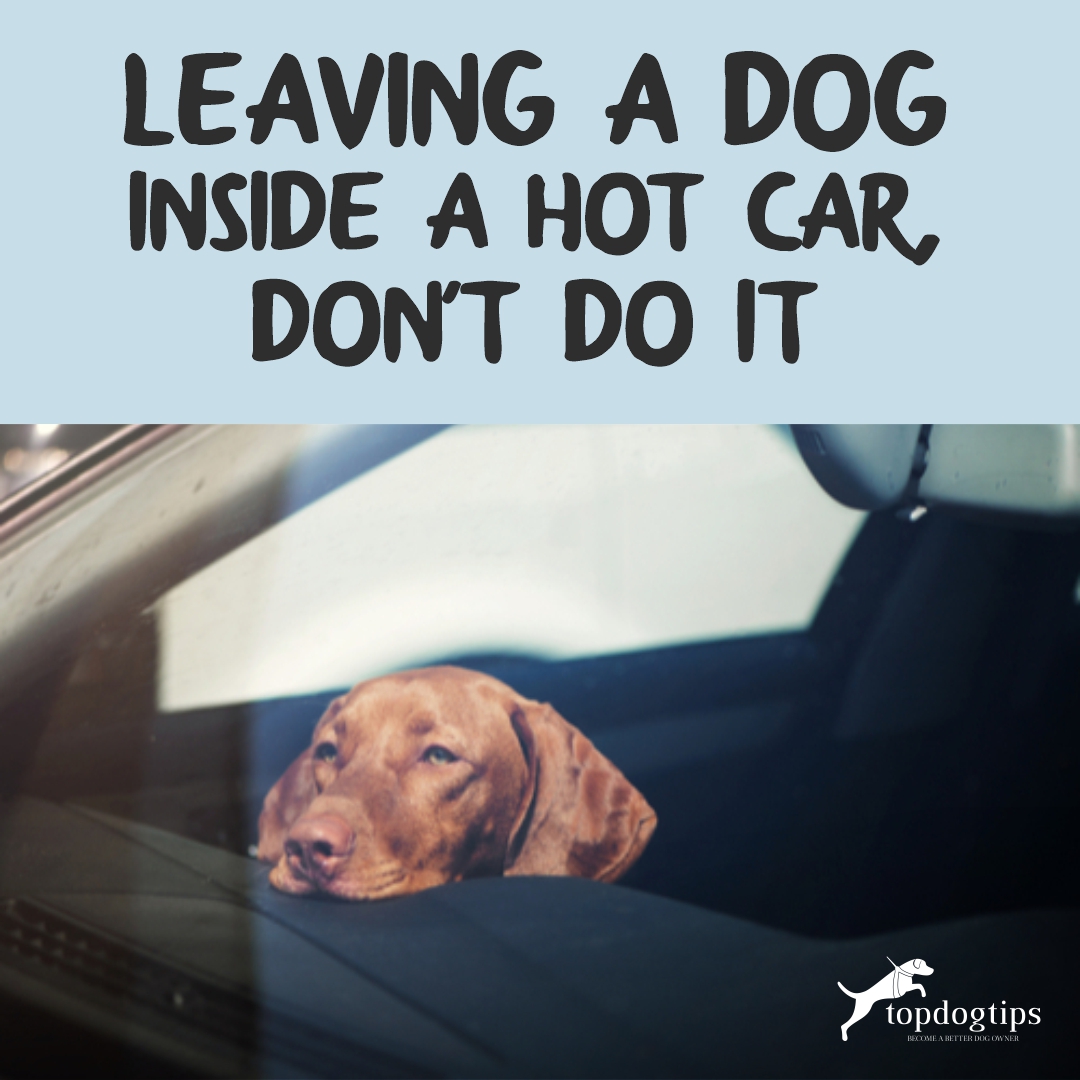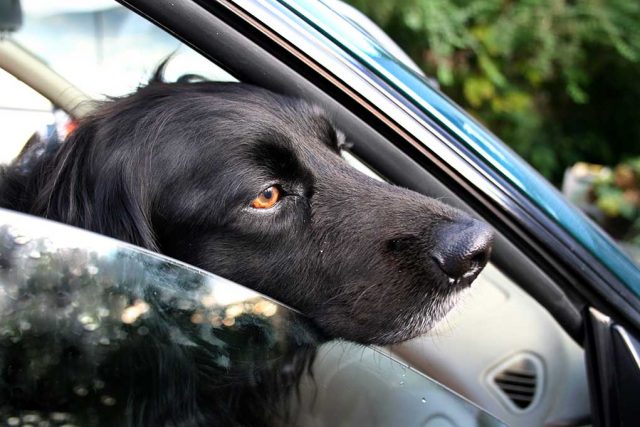
Table of Contents
- Temperatures Inside A Hot Car
- Effects of Leaving Dogs Inside a Hot Car
- How Can You Help a Trapped Dog Inside a Hot Car
- Remedies for Dog Inside a Hot Car That's Been Rescued
- Dogs That Tolerant Heat Better Than Others
- 12 Breeds That Are More Tolerant to Heat
- Hot Cars and Hot Pavements
- Do Not Leave a Dog Inside a Hot Car!
Leaving a dog inside a hot car is never a good idea, even if it’s just for a few minutes. Minutes under the heat of a scorching sun can be death traps for anyone, especially for them.
Keep reading to learn more about the risks, treatment, and laws regarding leaving a dog inside a hot car. We also highlighted 12 breeds that can take the heat better than others.
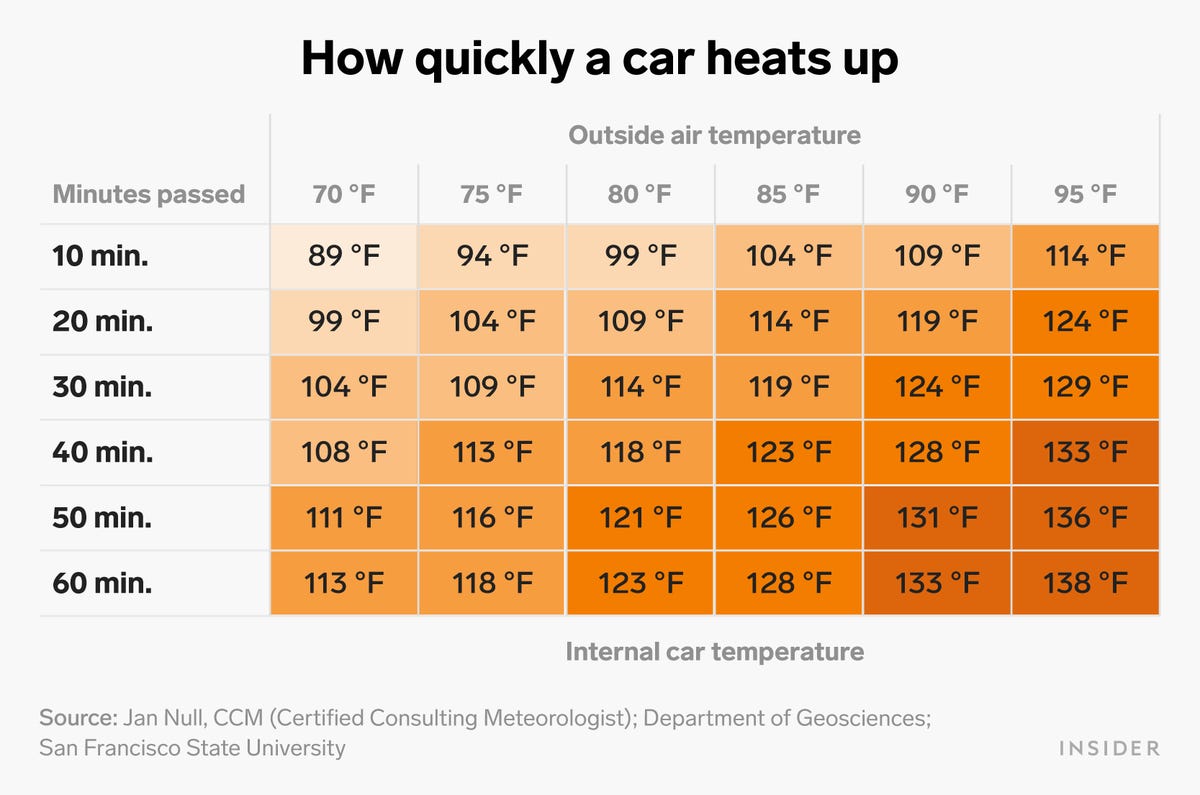
Temperatures Inside A Hot Car
Even if you crack a window open or leave your dog with water inside, it’s not enough to keep their bodies regulated with the heat. More than that, the temperature inside the car is hotter than the temperature outside, causing it to increase rapidly.
The temperature spikes. Its increase isn’t gradual; that’s why dogs cannot keep up with the intense heat. The excuse of leaving them in the car for a minute to do an errand can most likely be their last minute alive.
There are dog breeds that are more tolerant to heat. But this only gives them about five extra minutes before their bodies give up on them because of the rapid increase in environmental temperature.
Call it ignorance or otherwise; leaving your dogs inside a hot car is considered a form of animal cruelty.
If you don’t have dogs, you can advocate if you see a dog inside a hot car. Knowing what to do and what signs to look for may be their only saving grace.
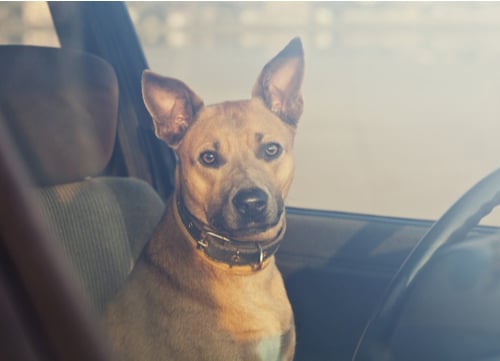
Effects of Leaving Dogs Inside a Hot Car
Dogs in hot cars are highly susceptible to heat stroke or death. A dog has a limited internal cooling system. Unlike humans, who sweat the heat out, dogs can only pant through their mouths. Excessive panting, however, is also highly taxing for them.
If you happen to see a dog left inside a car on a sunny day, look out for these prominent signs that signify heat stroke.
- Difficulty in breathing, such as heavy panting
- Excessive drooling with thickened saliva
- Restlessness
- Wobbly movements signify lessened coordination
- Vomiting and diarrhea
- Darkened tongue
The symptoms in this list are easy to distinguish. But there are other signs we can point out after taking the dog out of the car.
More signs of distress:
As soon as the dog is rescued, check if it has any of the following:
- Fever
- Rapid heartbeat
- Lethargy
Lethargic symptoms such as uninterest in playing or walking among dogs may show two to three days after the incident. Extreme fatigue and increased stress levels are associated with exposure to high temperatures.
If worse comes to worst, dogs can have brain damage and eventually die from staying long inside hot cars.
Higher temperature makes dogs susceptible to various illnesses, aside from heatstroke and dehydration.
It’s also important to note that some dogs are more intolerant to heat. Senior dogs, flat-faced dog breeds, and thick-furred dog breeds struggle more with regulating temperature.
How Can You Help a Trapped Dog Inside a Hot Car
As a civilian, you can actually take several measures to save a dog inside a hot car. You can contact the local police or animal control. When you get a hold of animal control, immediately inform them that it is an emergency.
Several states have existing regulations that categorize the act of leaving dogs in enclosed hot cars as a form of animal abuse. As a result, this act is penalized, and the owner will face corresponding sanctions.
If you happen to encounter such a situation, make sure to note the vehicle’s distinguishable features. Jot down the car’s color, make, model, and license plate number. You can also do the extra measure of requesting nearby stores to page the owner of the vehicle.
Furthermore, drastic measures, such as breaking car windows, are allowable under some laws. These acts are done to save the animals inside the car. If you are not sure if your state allows you to do it, make sure to call law enforcers or authorized humane officers.
If The Law Is On Your Side
A handful of states have their jurisdiction when providing the same power to civilians. California, for example, provides immunity to anyone who breaks into a car to save an animal that is in direct danger from the heat or lack of ventilation. At the end of the day, breaking into someone's car should be done in good faith.
Such measures are expected when the dog inside the car is experiencing the worst heat stroke symptoms, such as lethargy, vomiting, and passing out.
These measures and circumstances are avoidable if the owners stop leaving the dogs inside a hot car. If you see someone who is about to leave their pets alone, don’t be afraid to call them out.
Calling them out can save their pet's life.
Remedies for Dog Inside a Hot Car That's Been Rescued
Once the dog from a hot car is rescued, the first and most sensible course of action to counter the possible heatstroke is to rush them to the veterinary clinic. If possible, transport the dog using an air-conditioned vehicle to aid them in regulating their temperature. Offer them some water, too.
If the dog is lethargic, they may not drink some water, but at least they are in a cooler environment now.
If, for some reason, it is impossible to transport the dog to the nearest veterinary clinic, transfer it to somewhere cold. An air-conditioned building, such as a shopping complex, will suffice. What’s important at this moment is that the dog’s temperature will cool down.
Look around and see if there is a supply of cold water around then that is better. Fill a tub with cold water; avoid using iced water. Once the tub is full of water, submerge them and let them cool off there.
The most important thing you can do during the animal rescue is to stay around the area and ensure that the animal is safe. There is always a possibility that you are their only hope for survival.
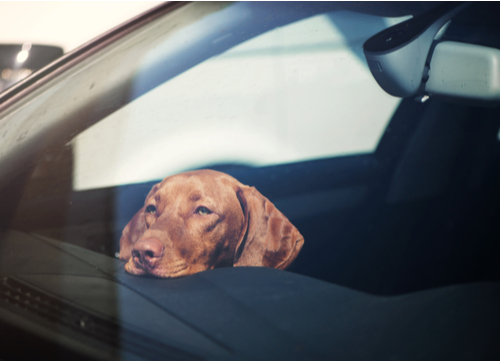
Dogs That Tolerant Heat Better Than Others
We already know that certain dog breeds are more sensitive to heat. These are the dog breeds that have thick fur and those that have flat faces. Generally, senior dogs and those with illnesses are also susceptible to extreme temperatures, especially high heat.
On the other hand, there are actually dog breeds that thrive in warmer weather. Interestingly enough, these breeds share similar characteristics, too. Most of these breeds sport a single, short coat, a lanky build, and a long snout or nose.
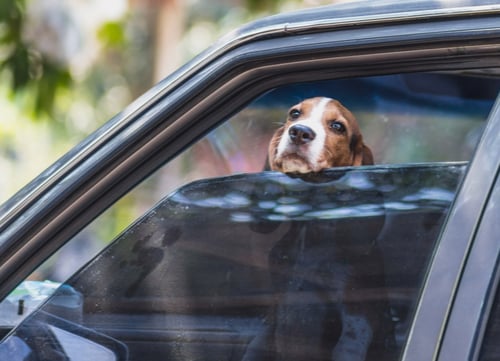
12 Breeds That Are More Tolerant to Heat
There are several other similarities, but let’s see their differences below.
Dalmatian
Dalmatians check out all the aforementioned characteristics. Historically, these dogs were expected to run for miles and miles. So, it is likely that their built tolerance to heat is one of their key to survival. It makes even more sense when you realize that these dogs are meant as firefighting dogs.
Afghan Hound
A striking characteristic of this breed is its coat. As compared to the norm, it is unexpected that Afghan Hounds are tolerant to heat because of their relatively long coat. However, the breed’s roots also tell of their tolerance.
Greyhounds
Another dog known for its agility due to its build and history is the greyhound. Its lankiness also makes it more tolerant to higher temperatures. Even with their tolerance to higher temperatures, greyhounds can be susceptible to extreme heat or cold.
Doberman
Despite having dark-colored coats, Dobermans are tolerant to heat. Their overall body composition makes them more comfortable lounging around in hotter areas with their short coat and big ears.
Yorkshire Terrier
This cute little dog breed is actually built to enjoy warm weather despite its long, fine hair. The Yorkie's hair is actually thin strands that do not insulate cold very well. As a result, it does not trap heat well, either.
Australian Cattle
This dog breed is tolerant to both warmer and colder weather. A type of herding dog, an Australian Cattle dog, requires consistent physical and mental activities to remain satisfied.
Ibizan Hound
Ibizan hounds are known for their ears. Sizable ears serve like radiators that effectively reduce the dog’s heat levels to let them thrive in warmer environments. Its build and short light-colored coat help in heat regulation, as well.
Rat Terriers
Rat Terriers are classified as small dog breeds, and this stature surely helps them adjust well to higher temperatures. Along with the size, they also have large ears that radiate heat back to the surroundings. Aside from their warmer weather preference, they also love warm hugs from their people, especially kids.
Chihuahua
It comes as no surprise that this breed is well-acquainted and well-adjusted to increased temperatures originating from the Mexican desserts. They have thin coats that do not do well in the cold. But when it comes to heat, it serves them fairly well and makes them comfortable.
Great Dane
Great Danes love to lounge and bask in the sun. These large dogs have lanky builds, long noses, big ears, and short coats. All their distinctive features help them regulate heat and allow them to enjoy it for long periods.
Basenji
This dog breed sports very short coats that help them brave through heat. Granted that they originate from equatorial Africa, Basenjis are exposed to extreme weather conditions.
Bichon Frise
It might come as a surprise that a Bichon Frise can tolerate warmer temperatures better than cooler ones. Despite having a thicker coat, its small stature and light-colored coats make it comfortable in warm weather.
These are just some of the breeds that are comfortable with warmer weather. However, despite their higher tolerance than others, keeping them inside a hot car during a hot summer day is not an excuse. Similar to other dogs, they will experience the same fate of dehydration, heatstroke, and untimely death.
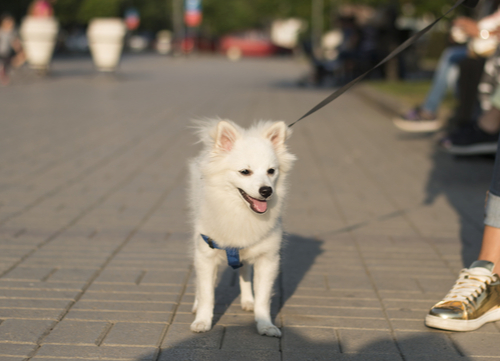
Hot Cars and Hot Pavements
Aside from getting trapped inside hot cars, dogs have another nemesis that comes in the form of hot pavements.
Similar to cars, heat rises fast on pavements. Pavement absorbs heat easily, making it hotter than the air temperature. If the breeze is hot, expect the pavement to be even warmer.
Whereas the dog’s coat helps in regulating heat, their paws do not receive the same protection. They, however, have layers of protection against tough and rough surfaces.
Before going out on a sunny day, feel the pavement’s temperature first. Press your hand down on the concrete. If it’s too hot for you, then it is definitely much hotter for your dog.
You can also estimate the temperature by feeling the breeze. If it feels too hot for you, it also feels too much for your dog. A dog's respiratory system is much more limited than humans, so they are more sensitive to heat.
With the imminent danger that heated pavements bring to dogs, it’s important to be ready with protective measures.
If it’s impossible to avoid pavements during your routine walks, make sure to let your dog wear booties or dog shoes. It may look funny for some, but safety trumps aesthetics this time.
On a scorching day, choose to skip walking on pavements altogether. As an alternative, you can choose to drive over to the nearest dog park or dog daycare.
Or, you can always choose to stay indoors. Clear some space for them to walk around. It’s better than nothing at all. If you have a spacious yard, then that’s even better.
An easy way to avoid burns during walks is to change your walking schedule. If morning walks prove to be too hot for your dog, opt for afternoon strolls for safer outdoor temperatures.
Do Not Leave a Dog Inside a Hot Car!
Leaving dogs inside cars on a considerably hot day is an act of animal harm. Despite reasons and excuses, leaving them on their own can cause severe and irreversible damage.
More people are aware of these risks and take action to protect and rescue trapped animals. State regulations also expand their jurisdiction to allow civilians to take drastic measures, such as breaking car windows to rescue these animals.
Let’s do our part to save more dogs from avoidable deaths. Continue to look out for and educate dog owners about their responsibility.
Related Articles
- Another Ontario Dog Owner Charged For Leaving Pet Inside Hot Car
- Owner Abandons Dog Inside Car on a Scorching Hot Day to Buy Pet Food
- Dogs in Cars During Summer: Are They Safe?
